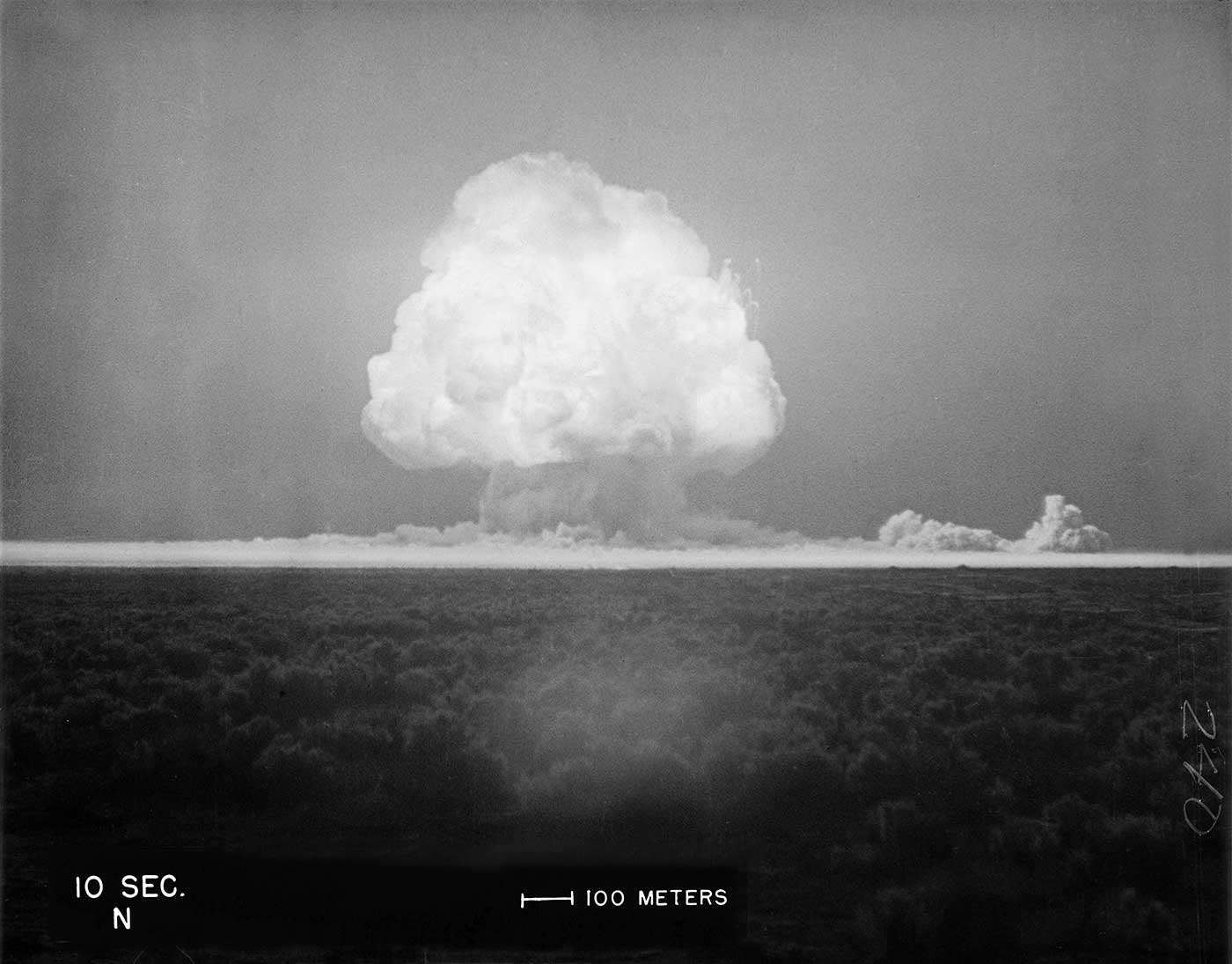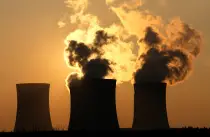Anthro-Nuclear Measurements
The Anthropocene is the name given by some to the geological epoch we are presently living in. The reason some choose this name is because they believe humanities capacity to exploit the earths resources, poullute the environment and even cause the extinction of other species earns it the unenviable position of being the greatest contributor to the degradation of the environment
.jpg)
At 11:29:21 (GMT) on July 16, 1945, the first ever nuclear bomb - 'The Trinity' - was detonated. The explosion created a crater approximately 4.7 feet (1.4 m) deep and 88 yards (80 m) wide. The radius of the trinitite layer was approximately 330 yards (300 m). The shock wave took 40 seconds to reach the observers and it was felt over 100 miles (160 km) away and the mushroom cloud reached 7.5 miles (12.1 km) in height. The power unleashed in this explosion was unlike any power humankind had unleashed before.
The Trinity test is often put forward as the beginning of the Anthropocene as it is a moment of incredible tangibility. The explicitness of the power makes it impossible to ignore the momentousness of the moment. In this moment humanity acquired a capacity for destruction equal to that which had only been described prior in mythologies: man, like god, had become a destroyer of worlds.
Humankind now had access to a power which could destroy species, planets and possibly even stars. The potential for destruction had been multiplied exponentially by many powers. In theory, it was now possible to destroy the entire universe. It is entirely surreal to think that a group of evolved primates which, only thirty years before, were still fighting with swords should now possess the means by which the whole universe might be destroyed.

The truly horrific and devastative power of this technology was demonstrated graphically only one month later when bombs were dropped on Hiroshoma and Nagasaki. Several hundred thousand people died in the months following these attacks. The majority of people did not die quickly and the fall out took many years to fall. The end of the second world war was the end of the world as it had been known. The imperial and antiquted mentalities which had been the cause of nine tenths of Europes conflicts during the preceeding three hundred years had voluntarily acknowledged their folly and the world was sympathetically united towards a more peaceful world
Is it not tragic, that only after the power to destroy the universe had been discovered and been partially released, that the world recognised the neccessity for peace?; that only once the technology capable of destroying the earth, over and over again, had been used by one group of humans against another, that the undesirability of such an event, or anything resembling it, became so palpable? It is as if until that moment, humanity had secretly accepted that conflict would be eternal.
How long the threat of mutual annihiliation will fend off someone with the big enough grudge, or how long it will be before such a weapons is engineered in a way which contains the fall out, thereby mitigating there effects. It is hard to believe that anyone truly desires the development of such a weapon, but the existence of the weapons themselves proves that extreme contexts provoke extreme responses.

Anthropocenic climate change is becoming an extreme context and the responses appear to be becoming more extreme. The preavelence of geo-political unrest at the present time is an indicator that there are forces applying pressure to each players various context. The resources on earth being finite and the economic system being competitive, naturally there is much interest in acquiring resources. Oil is a most notable exampl. Cobolt, Lithium and Water being other examples of resources which are being competed over.
Even cursory look at the history of conflict, especially in Europe, makes it almost beyond dispute that the causes of the conflict are Land, Titles, accessibility, commodities etc. Europe was constantly squabbling with each other for trading advantages, the recognition of lineage, territory and resources. In the case of Europe, the majority of its growth was facilitated by the capital accrued on the supra-national markets. Had the Europeans not had access to these markets, it is very unlikely that any European Businessman would have been able to obtain the fortunes which some did.
Since the second world war, the growth and advantages of the colonial hegemons have gradually diminished. India and China are two examples post-colonial successes. There is still much work for them both to do when it comes to creating more favourable conditions for their workers and processes which will provide them the growth they seek whilst mitigating the damage causes by the processes. The rest of the world is almost entirely dependent upon the manufacturing of these countries, the fashion industry perhaps being the most dependent of them all

The industrial manufacture of clothes is not only procedurally toxic, it is also excessively excessive. Prior to the mechanisation of clothes manufacture, and for a significant amount of time after, people made their own clothes, spun their own cloth and embroidered them themselves. There were no multi-million pound corporate brands selling clothes. Non-industrial techniques, rythms of life and values are natural barriers to over-production. Clothes have not always been the luxury items they are today. The simplicity of acquiring a pleasing piece of clothing obscures the expenditure of energy neccesary to produce it, just like the invisibility of the atom obscures the immensity of energy contained within it
The energy exchange, inherent in all processes, but visibly manifest in the transformation of light and water into seed and cloth, needn't be as superfluous or toxic as the present levels. By reintegrating and recultivating trad-historical practices and values at a grass-roots level, a significant amount of excess and pollution could be diminished. The onset of the Anthropocene could be described as an approach towards a nuclear horizon for all industries. Should we reach a time when only the most essential industrial processes are permitted, like those in the Edo period who were denied access to silk, we shall have to explore the arsenal for other techniques of manufacture which have been lost since the advent of machinery and mass-production and will need to be rediscovered and reintegrated into our manufacturing culture

Buy less, choose well, make it last
0000000000000000000000000000000000000000000000000000000000000000000000000000000000000000000000000000000000000000000